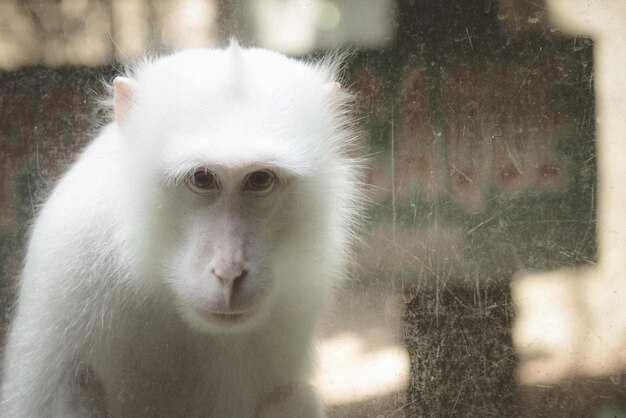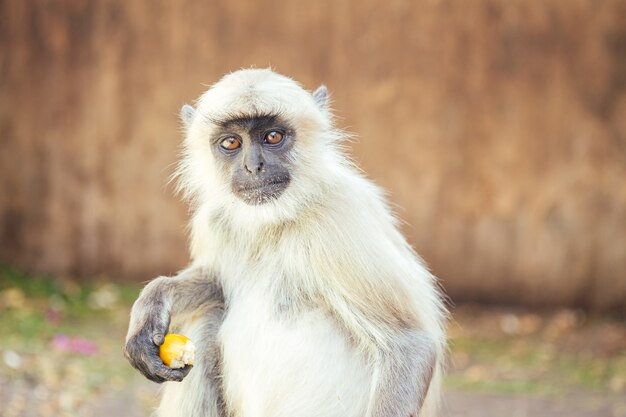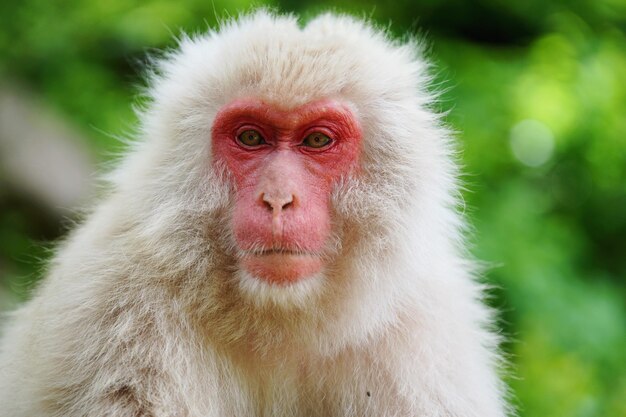Albino monkeys are rare and fascinating creatures that captivate both wildlife enthusiasts and researchers. Their striking white fur, pinkish skin, and light-colored eyes make them unique among their species. This article delves into the world of albino monkeys, exploring their traits, challenges, habitats, and the importance of conserving these extraordinary animals.
What Are Albino Monkeys?
Albino monkeys are not a separate species but individuals from various monkey species that are born with albinism. Albinism is a genetic condition caused by a lack of melanin, the pigment responsible for coloring skin, fur, and eyes.
The absence of melanin results in:
- White Fur: Their fur lacks the usual pigmentation, making them appear snowy white.
- Light Eyes: Albino monkeys often have pink or pale blue eyes due to the visibility of blood vessels.
- Sun Sensitivity: Without melanin, their skin is more susceptible to UV damage.
These unique characteristics make albino monkeys a rare sight in the wild, where their unusual appearance can both help and hinder their survival.
Where Are Albino Monkeys Found?

Albino monkeys can be found within the natural habitats of their respective species, including:
- Rainforests: Many albino monkeys belong to species that thrive in tropical rainforests.
- Savannahs and Woodlands: Open habitats also host monkey species where albinism occasionally occurs.
- Mountain Regions: Albino monkeys are sometimes found in high-altitude environments, depending on the species.
Spotting an albino monkey in the wild is incredibly rare, but they can also be seen in zoos and conservation centers where they receive specialized care.
Unique Challenges Faced by Albino Monkeys
While their appearance is mesmerizing, albino monkeys face several challenges that threaten their survival:
- Predator Visibility
Their white fur, while stunning, makes them more visible to predators. In dense forests, where blending in is crucial, this can be a significant disadvantage. - Health Issues
Albinism often comes with sensitive skin prone to sunburn and light sensitivity, affecting their ability to thrive in sunny environments. - Social Acceptance
In some monkey troops, individuals that look different may face rejection or isolation, making survival even harder. - Poaching Threats
Their rarity and unique appearance can attract poachers, who may capture them for illegal trade or display.
How Albino Monkeys Adapt
Despite their challenges, albino monkeys showcase remarkable resilience. In the wild, they rely on their intelligence and agility to navigate their environment. Those in captivity benefit from human care, which provides protection from predators, medical attention, and specialized diets.
Conservation of Albino Monkeys
The conservation of albino monkeys is essential for protecting genetic diversity and preventing their extinction. Key conservation strategies include:
- Protecting Natural Habitats
Preserving rainforests and other ecosystems ensures that albino monkeys and their species have safe spaces to thrive. - Raising Awareness
Educating the public about albino monkeys helps reduce poaching threats and promotes support for conservation initiatives. - Captive Care Programs
Zoos and wildlife centers provide albino monkeys with environments tailored to their unique needs, helping them survive and contribute to research efforts.
Albino Monkeys in Popular Culture
Albino monkeys hold a special place in folklore and symbolism across different cultures. They are often seen as symbols of purity, rarity, and mystery. Their unique appearance has also made them a favorite subject in wildlife photography, documentaries, and art.
In addition, albino monkeys play a crucial role in scientific studies. Researchers use them to understand the effects of albinism on behavior, adaptation, and survival in the wild.
Fun Facts About Albino Monkeys

- Not a Species: Albinism can occur in any monkey species, making albino monkeys a genetic variation rather than a separate category.
- Rare Sight: Documented sightings of albino monkeys are extremely rare, adding to their mystique.
- Cultural Significance: Some cultures consider albino animals sacred or symbolic of good fortune.
- Scientific Interest: They offer insights into genetics, evolution, and the impact of albinism in the animal kingdom.
Why Albino Monkeys Need Protection
The albino monkey’s survival is a testament to nature’s resilience, but it also highlights the fragility of rare genetic conditions. Protecting these animals goes beyond preserving their beauty—it safeguards biodiversity and ensures that future generations can learn from and appreciate their uniqueness.
Human actions, including habitat destruction and illegal trade, have a direct impact on their survival. By supporting conservation efforts and spreading awareness, we can help ensure their safety and well-being.
How You Can Help
Here are some ways you can contribute to the protection of albino monkeys:
- Support Conservation Organizations: Donate or volunteer with groups that focus on wildlife protection.
- Avoid Illegal Wildlife Trade: Educate yourself and others about the dangers of buying exotic animals.
- Spread Awareness: Share information about albino monkeys and their plight to inspire others to take action.
Final Thoughts
Albino monkeys are a rare and extraordinary gift of nature. Their unique appearance and the challenges they face remind us of the delicate balance required to maintain biodiversity. By learning more about albino monkeys and advocating for their protection, we can play a role in ensuring their survival.
Whether you encounter an albino monkey in a wildlife documentary, a conservation center, or the wild, take a moment to appreciate its rarity and the story it represents. These remarkable creatures deserve our admiration and efforts to safeguard their future.


